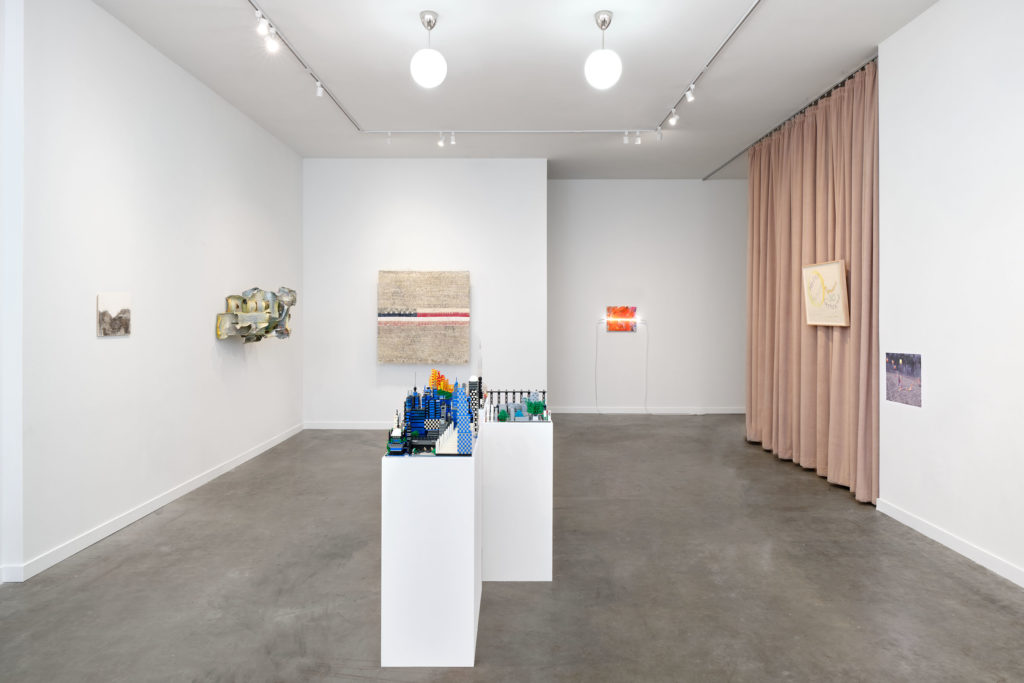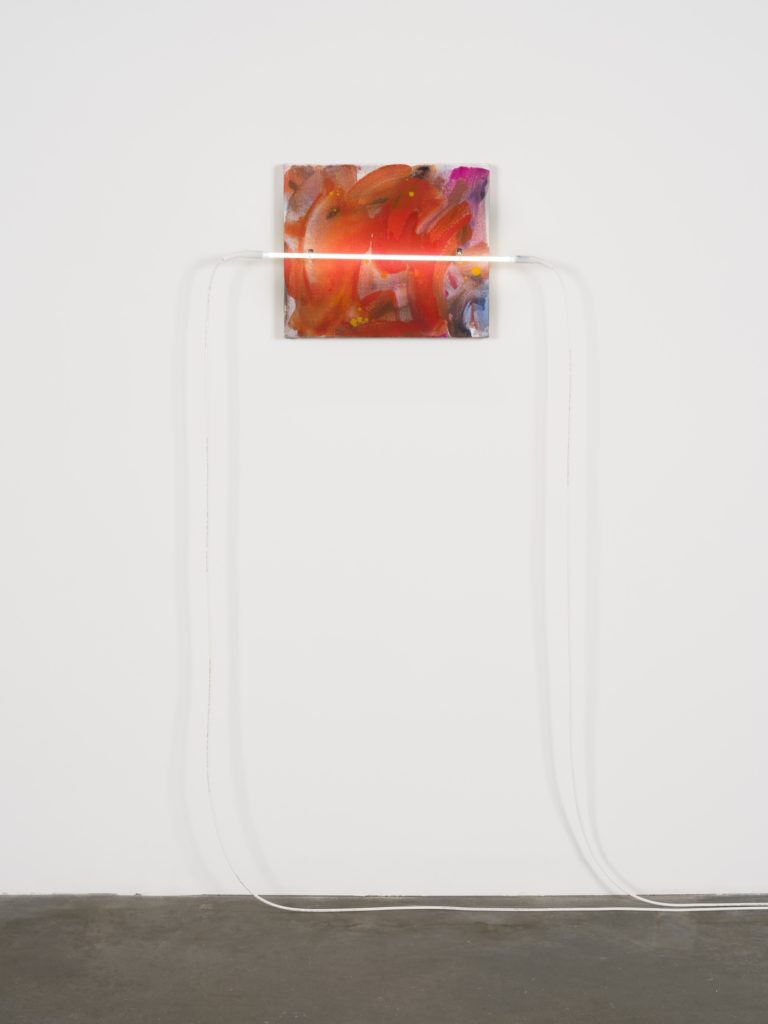The Inseparables
April 8–June 10, 2023
Beaux Mendes, Carolee Schneemann, Cynthia Hawkins, Diane Severin Nguyen, Ei Arakawa, Jacci Den Hartog, Janet Olivia Henry, Jeanne Dunning, Mary Weatherford, Mette Madsen, Patty Chang, Rosemary Mayer, Sonya Kelliher-Combs
In Revival: Provence from Minstrels to the Machine, Ford Madox Ford recounts a story of Our Lady of the Castle appearing before a young shepherd who was chiseling a rock in the Alpilles, and sitting for him for her portrait. When it was done, Ford writes, she “expressed her complete satisfaction with the statue both as a portrait and as a work of art . . . There at once was presented to the world the final canon of aesthetics . . . And that image was a rude, carved piece of reddish rock.”
Just as the story of the shepherd sculptor’s divine simplicity is a rebuttal to modernity’s assault on the links between nature and everyday life, the artists in “The Inseparables” reflect a faith in reconceptualized approaches to the quotidian and so-called natural, so that they may be rescued and reintegrated. If the modern subject today understands nature and society as counterpoised, the abstract sensuality of Mette Madsen’s paintings (Inertia, 1994, Sequence, 2003, and Undated 1, 2, and 3), Jacci Den Hartog’s sculptures (Articulation and Lurking Places, 2023), and Diane Severin Nguyen’s photograph (Directions for Decomposition, 2023) harness a position of locating the nature of nature—universal processes of budding and rot—back within our selves. Carolee Schneeman’s landscapes of Fire Island and Cynthia Hawkins’s expressions of autumn wind and mountain shadows inflect the traditional landscape portrait with the muddied curves, flashing jewel tones, and soft patches of subjectivity. Violent pinks and radish-crimsons appear unexpectedly here, as does the translucent gray of flaking skin in Jeanne Dunning’s inkjet print of a scab, and the processed saturation of Janet Olivia Henry’s New York Phantasmagoria cityscapes constructed from Legos.
The works presented here yoke a primary alphabet of color and form to articulate the shifting, opaque waters of the mind, and in so doing, position themselves against the Enlightenment notions of rationality and progress that have insinuated themselves into our lives. The split conception of an external nature situated over there is one embraced by capitalist hegemony, as much as its predication on divisions of class, gender, race, ethnicity, and age. The creation-invention of human and physical geographies that barely coexist have reified the disjuncture between society and nature, enabling the domination and possession of that which is deemed “wild,” “(a)social,” “(ab)normal.” “The Inseparables” recenters the fact that we produce nature, as we produce social relations, and as such have the power to reconstitute them otherwise.
Such splits are further refracted through Sonya Kelliher-Combs’s Mark, Nanuq, 2023, Ei Arakawa’s Hawaiian Presence (Kauaii), 2014, and Patty Chang’s 1999 video Fountain—in which the artist attempts to drink water from a mirror, in a repaired retelling of Narcissus’s falling in love with his own image. Works by Rosemary Mayer, Beaux Mendes, and Mary Weatherford round out an exhibition that offer visual arguments against what Wordsworth called the “outrage done to nature.”
—Hiji Nam













































